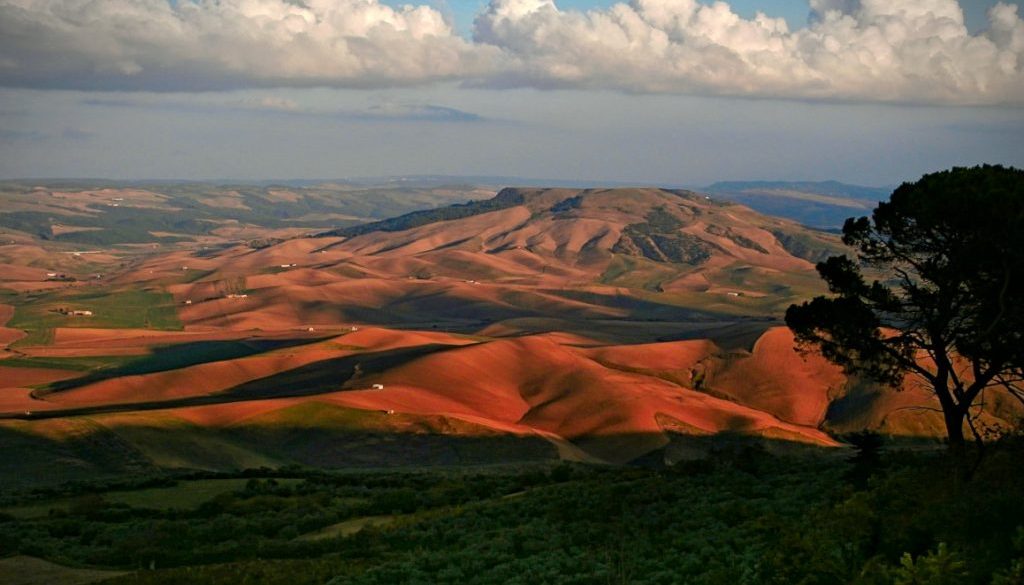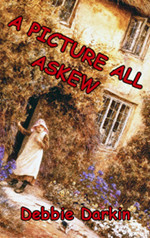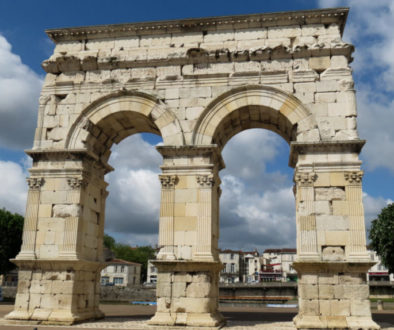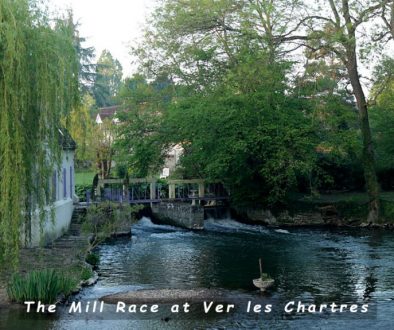IRSINA AND IT’S FEISTY SAINT
IRSINA
16th October:
“Let’s have a look at this place called Irsina,” I suggested, pointing to an illustration in a booklet we’d been given. So we got ourselves together and set the SatNav, only to discover that the turning to Irsina was literally just up the road. We had not often gone along it in the Grassano direction, and had certainly not noticed the signpost to Irsina. What a discovery!
Green, flattish fields, and then suddenly an enormous, high ‘wall’ that dived down below the earth’s surface. Clearly an old quarry to build the ‘new town’ which sloped quite steeply upwards above it.
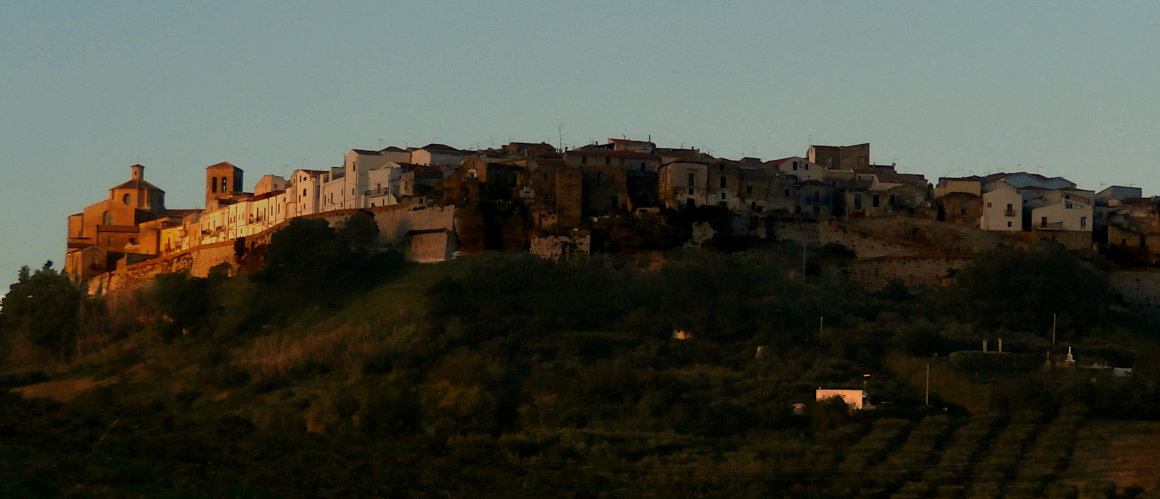
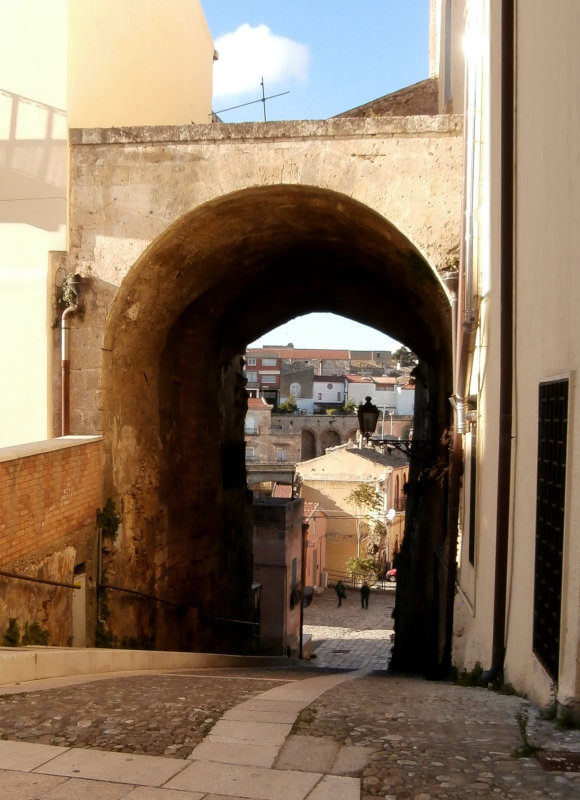
IRSINA – MORE RAUCOUS STARLINGS IN A QUIET PIAZZA
We found ourselves in a very long, steep High Road full of shops. The road was suddenly faced with what was clearly a very old arch (the Porta Maggiore – Main Gate). We passed through into the Citta Storica. We found ourselves in a piazza that had a grand building (for a modest country town) all along one side. There was another at the back.
The centre of the Piazza Garibaldi was taken up with thick, square clipped trees that formed a block. They were faced at intervals by park benches. As we walked in deep shade beneath these trees they suddenly came alive with loud rustlings and birdsong. They were obviously chock-full of Starlings.
IRSINA – YOU CAN SEE FOR MILES AND MILES AND –
We emerged to find ourselves looking at one of the most impressive war memorials we had ever seen. Not that it was large or elaborate; it was the vitality of the charging soldier atop his high white plinth.
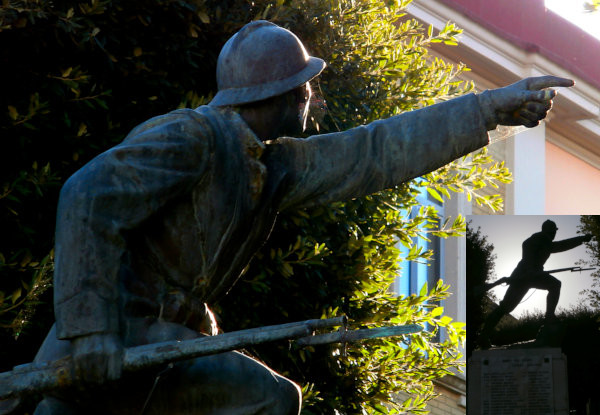
Beyond, a low wall overlooked the panoramic, colourful landscape of the feature photo at the top of this page.
We looked out over miles of typical Basilicatan plain and low, swelling hillocks dominated by a flat-topped mini-mountain in the near-distance.
A diminutive gentleman of impressive age sat on the seat facing it. Suddenly he spoke to us in very good English.
“I look at this view every day, and I never tire of it.”
“We understand. We have noticed that in Basilicata particularly, as the sunlight moves around it constantly changes the view. It’s wonderful. What a beautiful town to live in.”
And it was – very special, although in some back streets we noticed that a few of the pretty old houses had been ‘gentrified. Many were now painted in pastel colours.
(We do have a photo of that friendly, courteous citizen, but we decided not to show it, out of respect to him.)
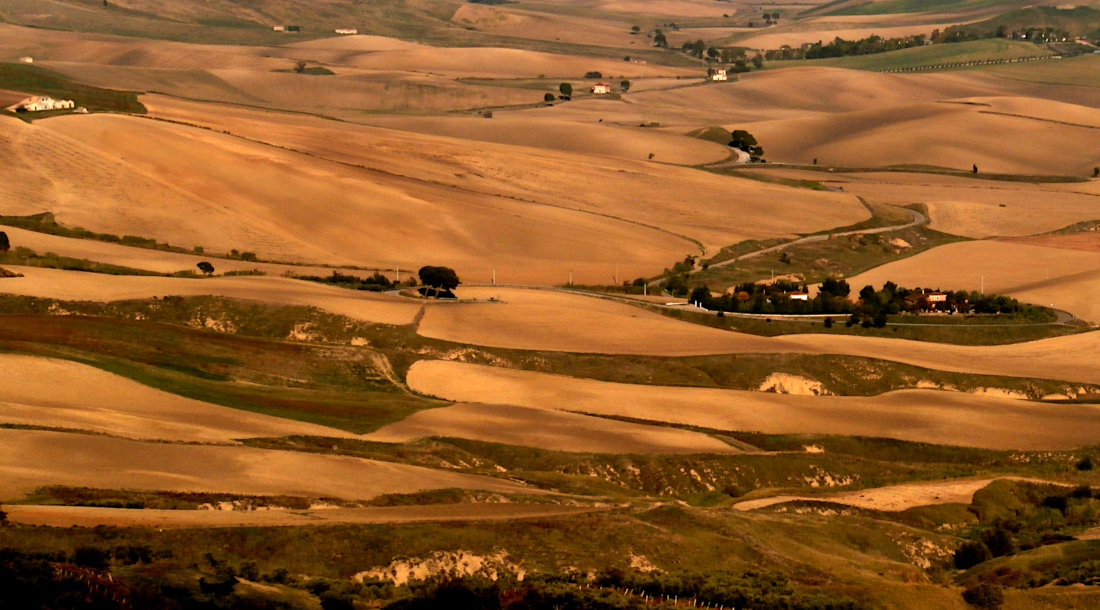
(The illustration just above was taken looking along to the left of the main photograph at the top.)
IRSINA – MORE EVIDENCE OF GREEDY BRITS – HANDS OFF!
PLEASE GREEDY DEVELOPERS – RESIST THE URGE TO ‘SNAP-UP’ PROPERTY HERE
On the Internet I discovered that this might well have been under the aegis of, I regret to say, some Englishwoman who is advertising property in ‘Basilicatashire’. Graham and I fervently hope this person stops this cultural plundering. We have seen too many historic towns and villages in many countries ‘Disneyfied’ at worst, and ‘prettified’ at best.
In Cornwall, most of the Tourist Trap villages are now lucky to have even one single Cornish person living in them. Their pretty cottages were snapped up when cheap to buy, and ‘developed’ for incomers who now live in them for short periods. They then let them out as short holiday lets. Some villages are almost empty in the winter months because the locals cannot afford to live in the place where they were born. The inflated prices outrun the local wages.
Heaven forefend that this will be the fate of unspoiled, authentic Basilicata! We would hate this magic land to go the way of ‘Dordogneshire’. The generous – handed people who live here might become resentful, as in Cornwall and some of the scenic areas of France.
We are not saying that people should not emigrate and settle in other countries; but the incomer should always be mindful of the sensiblities of those they are joining.
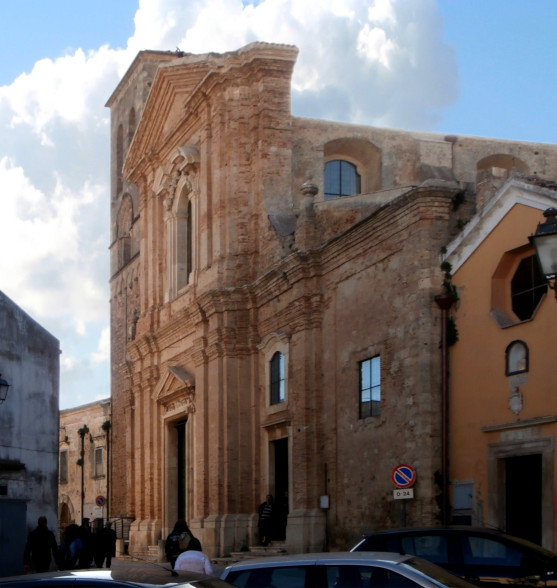
IRSINA- MORE INFORMATION FROM A FREE GUIDE
Irsina Citta Storica is an exquisite old hilltop town, which never ceased to fascinate us. Staying so close, we visited it at least three times. It has a small but very old (11c) Duomo. The inside is beautiful in a pleasingly unfussy way. We were privileged to hear a full account about its treasures. This was given to us by our free guide; a senior schoolboy with excellent English.
A GREAT SCHEME
In Italy there is a very good scheme whereby children learn all about the history of their town (and probably other facts.) On certain days (this was a Friday afternoon, after school) they set up a stall in the town square. They offer themselves as free guides to visitors. This also helps them to practice their foreign language skills on foreign tourists.
Giuliano, our guide, was as full of pride in his town as in his knowledge. We could be sure there would be no vandalism from him or his mates. Indeed, in all our many trips to Italy (and France) we’ve seen virtually no evidence of the vandalism that mars so many of our British towns and villages.
IRSINA – A PRETTY FEISTY SAINT
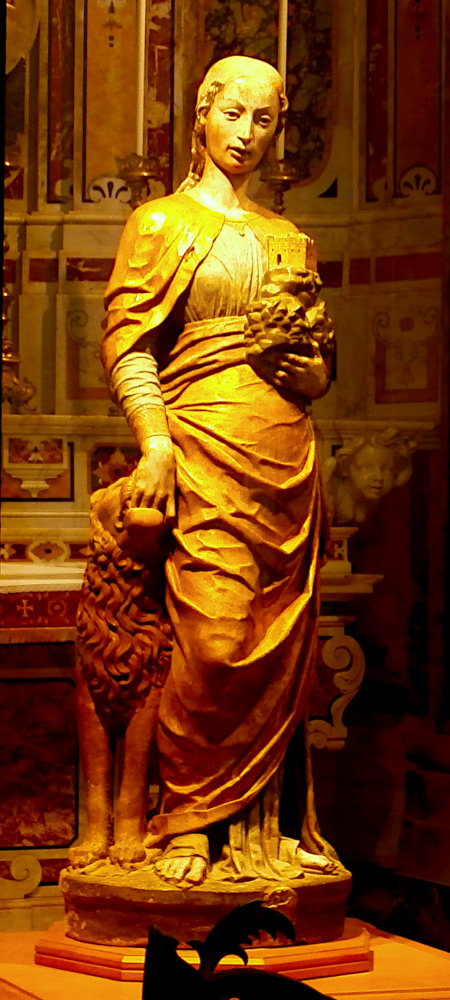
The great treasure of Irsina is the delicately painted and gilded stone statue of S Eufemia (Euphemia) that stands to one side of the altar. It had stayed hidden for centuries behind dusty glass on a high shelf in a storeroom of the Cathedral – and was only discovered in 2004!
From a newspaper report at that time –
Masterpiece unnoticed for 500 years: John Hooper in Rome:
Saturday 23 October 2004 00.35 BST
‘Almost two decades of detective work, triggered by a Latin poem found in the Vatican archives, has led experts to conclude that a statue that had stood unnoticed for five centuries in a small southern Italian town is the work of a Renaissance master.’
It is attributed to the great painter Andrea Mantegna – claimed locally to be a native of Irsina, though other records show him born in Padua. All agree that he was son-in-law of Jacopo Bellini, and an influence on Giovanni Bellini. Mantegna was born in 1431, and executed (sic) in Mantua in 1506. He created his exquisite statue of St Eufemia when he was only 23 – she is the patron saint of Irsina (– and quite a gal.)

(Vivien, who loves cats, would have liked Eufemia as the saint had a pet lion. We had an embarrassing time confessing to Giuseppe (after she had left) how we could not stop Vivien taking all the kittens into her bedroom at night and feeding them all with meat from our fridge as well as their kitten food. (He wanted them feral and a bit hungry, so as to catch mice. )
IRSINA – MORE THREATENING WITH HAND IN LION’S MOUTH
Eufemia’s statue is uncannily lifelike, and most remarkable in that it depicts a clearly strong woman. Here, for once, is a lady (although a saint she lacks any sort of halo) who looks extremely stern. She sends off the Saracens by putting her hand into her tame lion’s mouth.
The Saracens captured the town around 320AD. When young aristocrat Eufemia refused to meet their demands to make a pagan sacrifice (one wonders what that entailed, as she looks very pretty) they threw her into their lions’ den. She tamed and befriended the beasts. That was the story we were told, but there are some other, somewhat confusing versions.
Her expression said to Graham and me ‘Don’t f…. with me, fellars.’ (With apologies to J. Crawford).
It’s an exquisite piece. She is on a rotating plinth and at certain times they will work it for you…
IRSINA – MORE INTRIGUING SYMBOLS – IN A TEMPLAR-TEMPLE

The priest approached Graham.
I was surprised to see them in animated conversation. After the slow rotating of this remarkably beautiful statue to gasps of wonderment from all of us visitors, the caretaker took the two of us down to the 11thc cross-form crypt. It is massive, and amazingly intact. It is attributed to the Knights Templar. As well as a fading fresco where God the Creator looks down benignly from the centre of the ceiling, there is a well-preserved escutcheon with an elderly pilgrim as centrepiece.
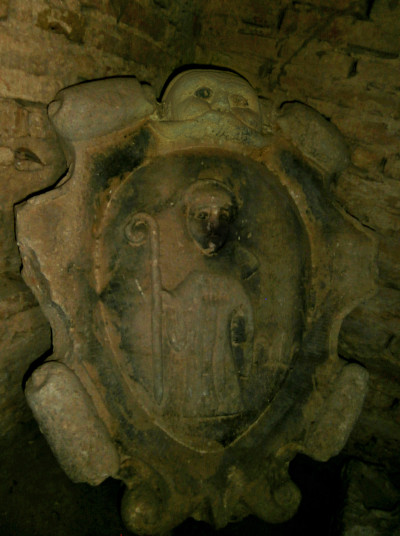
Above this is a carved and painted, fat and very large heavily-moustachioed face with no apparent chin. We saw this face carved into walls (and also on stables) all over Basilicata. It is very primitive, and we wondered if it is the Italian equivalent of our ‘Green Man’.
In the centre of the floor is a roundel with classic geometric ‘flower’ or ‘daisy wheel’ pattern. (Looking it up, I think it means ‘The Seed of Life’). As at Stonehenge, the very centre of this symbol is caught by a beam of light at sunrise at both Summer and Winter Solstices. Three round windows set into the ceiling of the half-dome enable this.

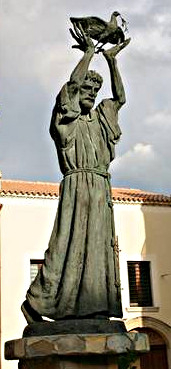
We went back several times to see more of Irsina. We walked round the ancient streets and alleys, and the small squares with fountains. In one we found a most lively statue of St Francis of Assisi holding aloft the Dove of Peace. He is standing in front of the Church of the Purgatoria.
IRSINA – MORE SURPRISES – WHIZZING PIZZAS & FINE DINING
Near the main piazza there is the pleasant Caffe Ducala Ristorante & Pizzeria serving ice creams as well as food and drink. The proprietor, who spoke perfect English, delighted in amazing us with a performance of flipping pizza bases up and around himself.
We also had a lunch and at least two evening dinners at the excellent trattoria in the main square; Trattoria Nugent da Mario e Gigia, where we met a friendly Belgian party of four. One gentleman made films in time spared from his business. Graham, with similar aspirations, was delighted. The rest of us made polite conversation while those two got ever deeper into their subject. Email addresses were exchanged, but so far no further connections have been made.
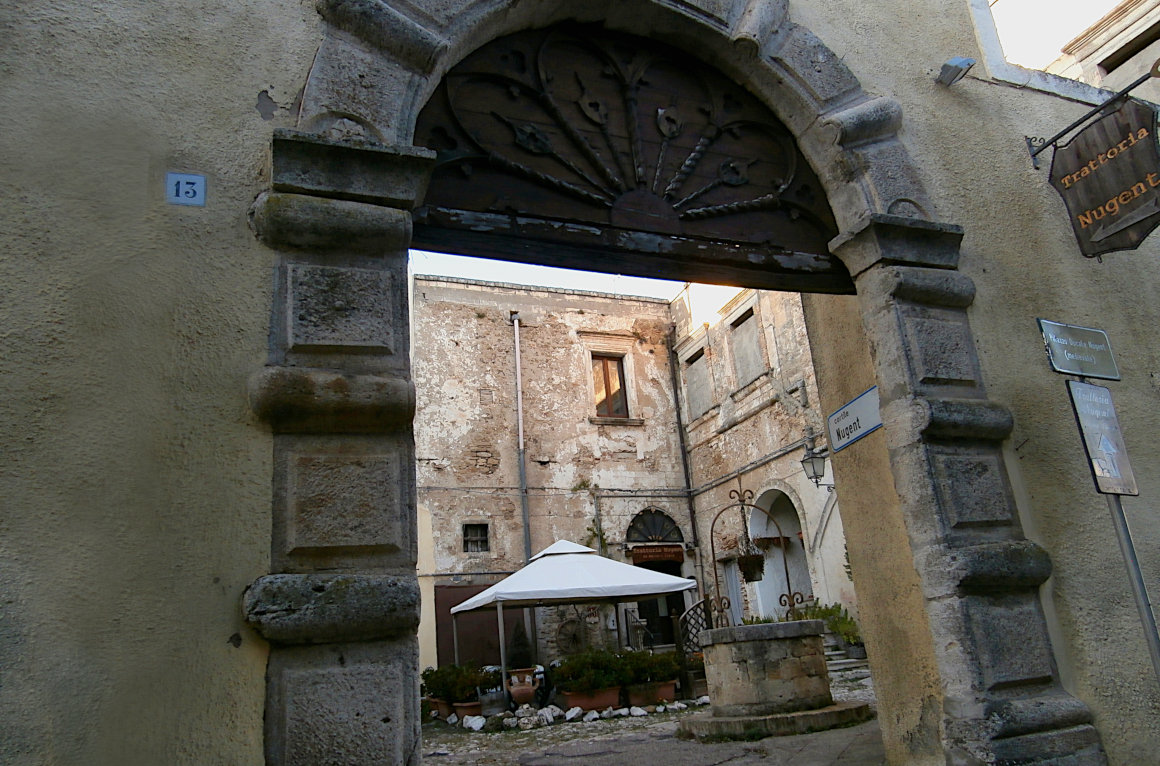
Text by – Jackie Usher, SWWJ. (aka author Debbie Darkin, & ‘Graham Liverpool’ on Trip Advisor.)
Photographs by – Graham Usher.
Video ‘Pizza Magic’ by Graham Usher. Music by Kevin Macleod – ‘If I had a Chicken’
![]()

